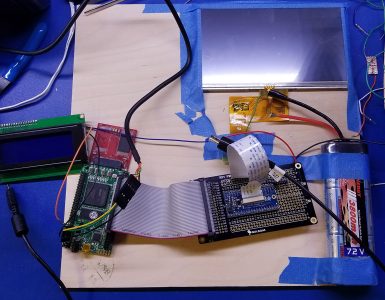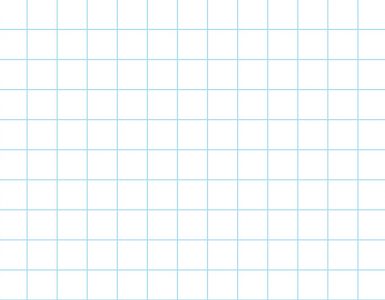I purchased a CS4334 to eventually use as an Audio DAC for the badge computer. I’ve never worked with DACs before, and my knowledge of audio is somewhat limited.
This audio DAC is a Cirrus Logic CS4334 with datasheet available here.
This chip is the I2S variant, specifically not the LEFT justified or RIGHT justified one. Each variant has slightly different timing requirements. The I2S specification is located here.
The audio data is a simple 700hz tone for 4 seconds with sample rate of 8000hz, and using signed 8-bit export. The audio file is here. 8k_signed8bit_straight700hz4s <— rename the .txt to .aiff. Use “Import Raw” feature of audacity, specify 8000 sample rate, signed 8-bit pcm. I generate an altera .mif using srecord, and here’s the resulting .MIF —–> 8ksigned_700_4s.
Here’s the output that I’m hearing. There are (8) chunks of sound as far as I can tell.
There IS my 700hz sample found in one of those eight chunks. It’s the “purest” sounding chunk of sound. You’ll know it as soon as you hear. LINK if the player below doesn’t work for you.
Any help to what the heck I’m doing wrong here would be appreciated!!
Here’s my verilog:
[cc lang="verilog"] dac_clocks dac_clocks_inst (
.areset ( 1'b0 ),
.inclk0 ( SYS_CLK ),
.c0 ( SCLK ),
.c1 ( LRCLK ),
.c2 ( MCLK ),
.locked ( USER_LED[1] )
);reg [7:0] sendbyte;
wire [7:0] romout;
reg [13:0] address;reg SDATA;
wire SCLK; //128khz
wire MCLK; //1.024mhz
wire LRCLK; //8000hz to match the sample rateassign PMOD_B[0] = SDATA;
assign PMOD_B[1] = SCLK;
assign PMOD_B[2] = LRCLK;
assign PMOD_B[3] = MCLK;//setup the edge detection for LRCLK
reg LRCLK_OLD;always @(posedge MCLK)
begin
LRCLK_OLD <= LRCLK;
endassign LRCLKfalledge=LRCLK_OLD & !LRCLK;
assign LRCLKriseedge=!LRCLK_OLD & LRCLK;dacrom dacrom_inst (
.address ( address ),
.clock ( MCLK ),
.q ( romout )
);/*this is to satisfy "In I2S mode, the MSB of the left channel is valid on the second rising
edge of BCLK[my SCLK] after the falling edge of LRCLK. Similarly, the MSB of the right channel is valid on the
second rising edge of BCLK after the rising edge of LRCLK"
*/reg [7:0] twocycledelay;
always @(posedge LRCLKfalledge or negedge SCLK)
begin
if (LRCLKfalledge) twocycledelay <= 8'b0; if (!SCLK) begin twocycledelay <= twocycledelay + 8'b1; if (twocycledelay == 8'd2) begin sendbyte <= romout; //counter <= 3'b0; //reset the bitcounter because we have a new byte end //else counter <= counter + 3'b1; //send next bit if we're not resetting end end always@(posedge LRCLKfalledge) //when it's true that there's a falling edge, read the next byte begin address <= address + 14'b1; if (address == 14'd32000) address <= 14'b0; //data in rom is 32000 bytes deep end reg [2:0] counter; //send data MSB first. is it already two's complement from audacity? always@(negedge SCLK) //put the data on the falling edge so that the receiver can read it on rising. begin SDATA <= sendbyte[3'd7-counter]; counter <= counter + 3'b1; end [/cc][/pre]







Add comment